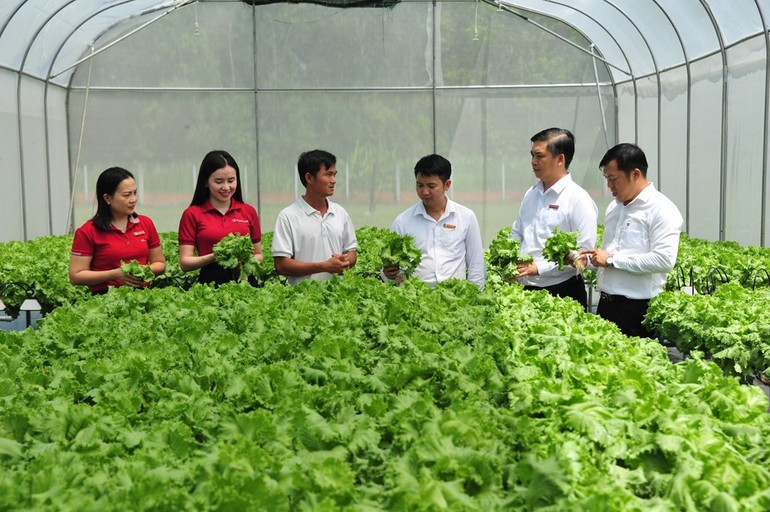Legal reform needed to make agricultural insurance accessible for farmers
In the face of accelerating climate change and increasingly frequent natural disasters, insurance has become an essential risk management tool for Viet Nam’s farmers. It not only safeguards agricultural assets but also helps maintain production stability. Despite its importance, legal ambiguities continue to hinder access to insurance—especially among rural communities who need it most.

Recent amendments to the Law on Credit Institutions were introduced to curb coercive sales of life insurance products during loan applications. While these changes are broadly welcomed by financial experts and insurance providers, the reforms fall short in one critical aspect: they do not clearly differentiate between investment-linked life insurance and non-life insurance products designed purely for risk protection, such as agricultural insurance. This lack of clarity has led to confusion in the market—particularly for products that play a pivotal role in supporting rural livelihoods and enhancing financial resilience.
Regulatory ambiguities undermine trust and access
In 2023 and 2024, Viet Nam’s insurance sector came under intense public scrutiny due to several high-profile scandals involving specific companies and individuals. These incidents eroded consumer confidence and impaired the sector’s ability to deliver much-needed insurance solutions to broader society and the economy.
Under the revised law, effective from July 1, 2024, banks are prohibited from forcing customers to purchase insurance—especially investment-linked life policies—as a condition for loan approval. However, the law does not explicitly distinguish such products from non-life insurance offerings like agricultural and property insurance, which are protective by nature and critical for managing credit risk.
Article 113 of the law permits commercial banks to act as insurance agents, allowing them to provide consultation, market products, collect premiums, and process claims. However, Article 15, Clause 5 prohibits the bundling of voluntary insurance with banking services. This regulatory contradiction has led to inconsistent interpretations by banks and customers alike, disrupting the widely adopted bancassurance model.
As a result, agricultural insurance products such as crop and livestock coverage—key tools for farmers managing unpredictable environmental risks—face the threat of being misclassified and unfairly restricted under the same rules designed to govern investment-focused life insurance.
Financial experts argue that non-life insurance, especially in agriculture, should be treated separately under the law. Unlike investment-linked policies, these products contain no investment component; their sole purpose is to mitigate losses arising from natural disasters, diseases, or other uncontrollable events. Failing to distinguish these protective policies from financial investment products risks turning well-intentioned legal reform into a barrier, ultimately weakening the effectiveness of agricultural lending and credit.
Banks, wary of regulatory repercussions, may become reluctant to distribute or collaborate on these insurance products. This hesitation could deprive millions of rural Vietnamese—already vulnerable to economic and environmental shocks—of critical risk protection.
Without insurance, farmers often hesitate to borrow or invest in scaling their production, fearing the financial ruin a disaster could bring. In the absence of adequate coverage, natural calamities lead to defaults, placing additional strain on public funds and destabilising both borrowers and lenders.
The financial impact of this gap is evident. When Typhoon Yagi struck Viet Nam, total damages were estimated at over 85 trillion VND (3.27 billion USD). Yet insurance payouts amounted to less than 9 trillion VND (345.87 million USD)—just 11% of the total. In Quang Ninh Province, the hardest hit, only 4.8% of damages were covered by insurance. These figures highlight the insurance sector’s limited reach and the continuing burden borne by individuals and the state.
Agribank Insurance: A rural-centric approach
To help mitigate these risks, Agribank Insurance was established as part of the Agribank ecosystem with a unique mission: to bring insurance to Viet Nam’s most remote and underserved communities. Unlike most insurers who target urban markets, Agribank Insurance focuses on protecting rural labourers and small-scale producers—those most exposed to climate shocks and economic uncertainty.
Its portfolio includes crop insurance, livestock protection, and credit-linked personal insurance. These products not only enhance farmers’ financial confidence but also contribute to broader goals of social security and disaster preparedness.
To date, Agribank Insurance has reached over 3 million farming households and tens of thousands of small businesses. Of its nearly 2 million policyholders, most are rural borrowers—farmers, fishermen, and salt workers. The company has processed close to 300,000 claims, paying out over 6 trillion VND (230.58 million USD) in compensation. These payouts have helped borrowers repay loans and secure financing to continue their production cycles.

To strengthen the role of insurance in agriculture, Agribank Insurance is calling for more precise legal guidance. Specifically, it advocates for a clear distinction between investment-linked life insurance and risk-prevention non-life insurance. Banks, it argues, should be allowed to distribute non-life insurance products linked to agricultural lending without regulatory ambiguity.
In addition, a flexible and transparent distribution framework is needed to ensure these products are not misinterpreted as coercive. This is particularly crucial in Viet Nam’s fragmented rural economy, where reaching each household remains a logistical challenge.
Policymakers are also encouraged to recognise agricultural risk insurance—particularly for natural disasters—as a valid form of collateral for loans. Incentives such as preferential interest rates or allowing banks to finance insurance premiums, as seen in many developed countries, could significantly increase insurance participation.
When livestock insurance is unavailable, farmers hesitate to borrow. When they face uninsured losses, they fall back into poverty. And when loans lack insurance, a single disaster or illness can push entire households into default. In such a scenario, the vision of sustainable agricultural development risks becoming just another slogan.
Insurance, at its core, is more than a financial product—it is a promise of protection, a foundation of trust, and a pillar of hope. It must be recognised not just as a private-sector offering but as a public good essential to inclusive development. Without this perspective, even the most well-meaning laws may inadvertently deny farmers the support they desperately need.








